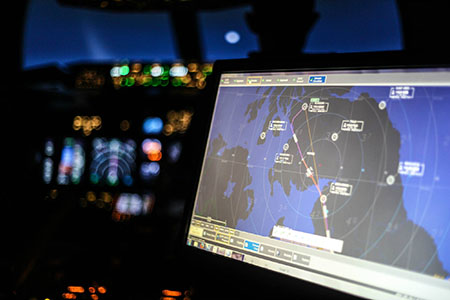With the commercial aviation industry moving from the traditional hours-based training method to an outcome- or competency-based approach such as Multi-crew Pilot License (MPL), training programs will begin to evaluate the pilot in a more-in-depth manner than the “standard” or “above standard” assessments prevalent today. The benefits of such an aptitude-testing program include enhanced safety, lower overall training costs, and a higher training success rates. Realistic and dynamic simulated ATC communications as part of this progressive MPL training will help to lead to more effective and efficient commercial pilot training. The following white paper will be of interest to flight simulation manufacturers, commercial flight schools, the commercial airline industry, and to any reader interested in new approaches to ab-initio and flight crew recurrent training.
You should download the ASTi white paper to read more.

Photo courtesy of Airliner1